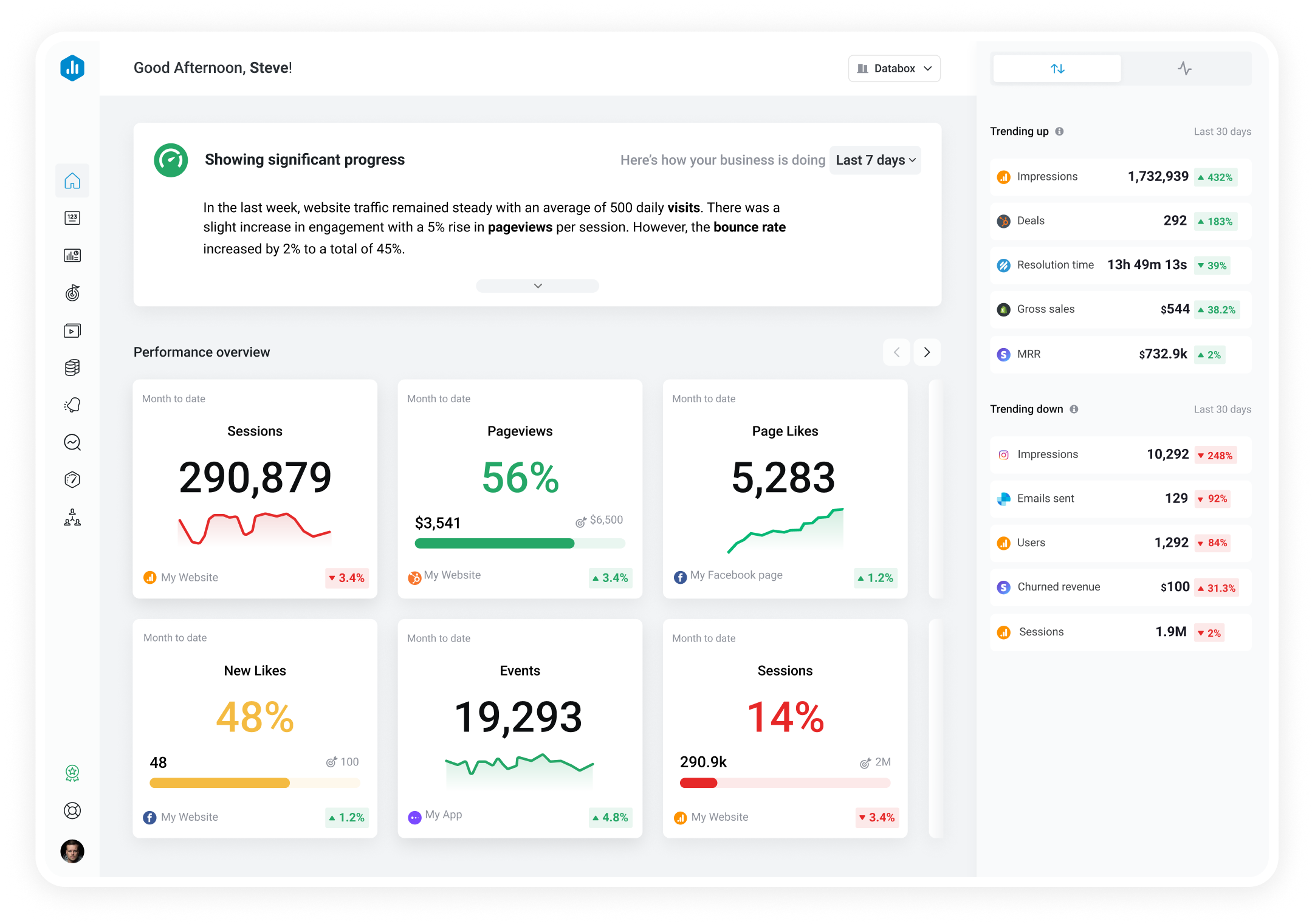Track all of your key business metrics from one screen
GET STARTED
 Xero
Total Operating Expenses
Xero
Total Operating Expenses The Total Operating Expenses metric in Xero represents the sum of all expenses incurred by a business during its normal operations, including salaries, rent, utilities, and other overhead costs.
With Databox you can track all your metrics from various data sources in one place.
The total operating expenses metric refers to the sum of all expenses incurred by a business in its day-to-day operations.
These expenses are necessary to keep the business running and typically include things like the cost of goods sold, administrative expenses, depreciation, amortization, rent, research and development expenses, insurance, maintenance and repairs, professional services, and others.
It’s important to note that the specific categories and expense types can vary depending on the nature of the business and industry.
To calculate the total operating expenses for a business, you need to gather the necessary financial information from the income statement.
Simply put, the total operating expenses are calculated by summing up all the expenses incurred in the ordinary course of business operations.
You can use this formula:
Total Operating Expenses = Direct Expenses + Indirect Expenses + Other Operating Expenses
Direct expenses are those that are directly associated with the production or acquisition of goods or services.
Indirect expenses are expenses incurred in support of the overall business operations but not directly tied to the production process.
Other operating expenses refer to any additional operating expenses that are not included in the direct or indirect expenses categories.
Now, let’s say a company saw these expenses during a specific time frame:
To calculate the total operating expenses, we sum up all these expenses:
Total Operating Expenses = $200,000 + $100,000 + $20,000 + $15,000 + $10,000 + $25,000 + $5,000 + $8,000 + $12,000 + $7,000
This way, we find that the total operating expenses for this company are $402,000.
Keep in mind that this is a simplified example. In practice, the income statement and calculation of operating expenses will usually involve more line items and complexities.
As a general rule of thumb, a lower operating ratio indicates better operational efficiency for the business.
But the ideal ratio varies across industries due to major differences in business models, market dynamics, cost structures, and similar factors.
For example, in the healthcare Industry, the total operating expense ratio varies depending on the type of healthcare provider (hospital, clinic, etc.) and the mix of services they offer. It usually ranges from 70% to 90% of total revenue.
For the financial services industry, the total operating expense ratio can be influenced by factors such as regulatory requirements, staffing levels, and technology investments. Here, it typically ranges from 50% to 70% of total revenue.
It’s important to note that these ranges are general estimates and cannot be applied to every business within each industry.
You should analyze your specific operating expense ratio in conjunction with other financial metrics and industry benchmarks to get a better understanding of performance.
Since total operating costs have a direct impact on a company’s bottom line, business owners are constantly testing out new strategies to try and identify potential opportunities to minimize them.
Over the years, we talked to some of the leading industry experts and compiled a list of several methods they use to reduce total operating expenses in their businesses:
More resources to help you reduce total operating expenses:

Used to show a simple Metric or to draw attention to one key number.

Used to illustrate numerical proportions through the size of the slices.

Used to show comparisons between values.
Databox is a business analytics software that allows you to track and visualize your most important metrics from any data source in one centralized platform.
To track Total Operating Expenses using Databox, follow these steps:
 Goals
Goals Scorecards
Scorecards Metric Digest
Metric Digest Metric Builder
Metric Builder Data Calculations
Data Calculations Performance Screen
Performance ScreenOptimize e-commerce leadership with our WooCommerce + Xero dashboard. Monitor Sales Funnel, Performance, Profit & Loss, Revenue, Expenses, and Cash Flow metrics for actionable insights.


The best way to track your operating expenses and stay on top of them in real-time is by using specialized business analytics software like Databox.
This way, you can compile all of your total operating expenses alongside key financial KPIs in one place and create professional dashboards that are easy to read and understand.
With 100+ integrations, you can connect QuickBooks or any other accounting software you may use.
Operating expenses are the costs incurred in the day-to-day operations of a business and they’re directly related to its core activities. These expenses are essential for running the business and generating revenue, such as wages, rent, utilities, and raw materials.
On the other hand, non-operating expenses are not directly tied to the core operations of the business. They are incidental and include items like interest expenses, gains or losses from investments, and one-time charges or write-offs.
